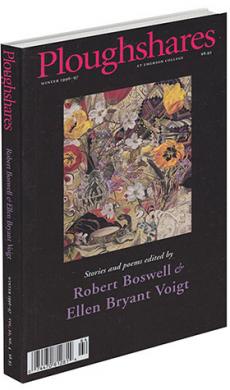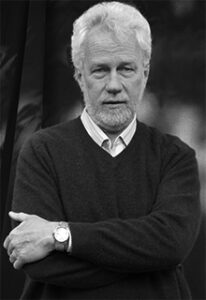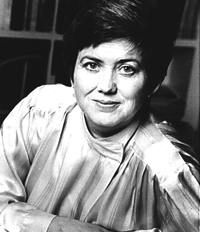rev. of Glass, Irony, and God by Anne Carson
Glass, Irony, and God
Poems by Anne Carson. New Directions, $14.00 paper. Reviewed by Liam Rector.
Poet and editor James Laughlin, publisher of New Directions, is still acquiring poetry that is importantly new, poetry that still sets and extends new directions. Again taking up the battle cry of his essential mentor, Ezra Pound, Laughlin has most recently made literature new by publishing Canadian poet Anne Carson’s
Glass, Irony, and God, one of the most important events so far in the poetry of the 1990’s.
Carson’s verse is Modernism at its old-fashioned, newfangled best: a use of montage that is slicing, dramatic, antic, learned, wise, wicked, and surprising; a use of fractured narrative which tells the story while also telling the consciousness and sensibility; and a use of elliptical, simultaneous musics rendered in precise, memorable phrasings. It’s as if other poets of the time have largely been fiddling around with lyric and narrative, expressionist and constructivist modes, while Carson sweeps by with the entire kit and caboodle. And she throws in a closing essay, “The Gender of Sound,” for good measure.
With titles such as “The Glass Essay,” “The Truth About God,” “TV Men,” and “The Fall of Rome: A Traveller’s Guide,” Carson sets out the audacious breadth, themes, and obsessions of her book, meanings and musics captured and propelled by an equally audacious sense and use of forms. With
Glass, Irony, and God, one senses the personal vision and hand at work in, say, the finest auteur film, and one is also amidst a vast impersonality that lights up and orchestrates historical figures such as the Brontë sisters, Artaud, Socrates, Sappho, and others. These figures are not arcanely referenced for the footnoters among us, but brought alive again in the very actions of the poem.
Carson’s work is suggestively, luridly, and simultaneously all closure and horizon. Her village — explaining voices are akin to the tone Robert Pinsky struck in
An Explanation of America, and her fastening of the voice to the page suggests the unmannered manner at work in the poems of Frank Bidart. In a useful introduction to the book, Guy Davenport notes that Carson “writes in a kind of mathematics of the emotions,” and I’d add that she does this in a terrain where classicism and romanticism hold equal tension, equipoise.
Her tale of a woman separating from a man called Law (which should be a special delight for those conspiracy buffs hot on the trail of patriarchy) is among the most complex and poignant in contemporary literature: “Yes, I said, as I began to remove my clothes. / / Everything gets crazy. When nude / I turned my back because he likes the back. / He moved onto me. / / Everything I know about love and its necessities / I learned in that one moment / when I found myself / / thrusting my little burning red backside like a baboon / at a man who no longer cherished me. / There was no area of my mind / / Not appalled by this action, no part of my body / that could have done otherwise. / But to talk of mind and body begs the question. / / Soul is the place, / stretched like a surface of millstone grit between body and mind, / where such necessity grinds itself out.”
Carson’s sense of romance is experienced and imaginative, rather than deluded and feckless. She goes for the inner adult and finds her (and him), as in “Perhaps the hardest thing about losing a lover is / to watch the year repeat its days. / It is as if I could dip my hand down / / into time and scoop up / blue and green lozenges of April heat / a year ago in another country.”
If you have been wondering, sorrowing, or worrying about the fate of reading in an electronic age, the electric intelligence and artistry here may be your book back, your book forward.
Liam Rector’s collections of poetry are The Sorrow of Architecture
and American Prodigal.
He edited The Day I Was Older: On the Poetry of Donald Hall,
and he directs the graduate Writing Seminars at Bennington College.


